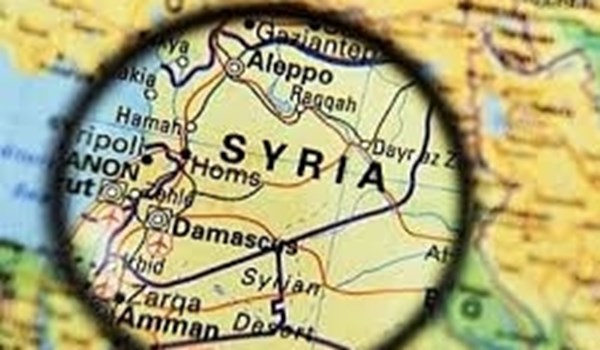
RNA - In one of the most concrete steps yet to ending the conflict, Tehran, Moscow and Ankara agreed to establish four “deescalation zones” which will be monitored by international troops. The deal, which sees the use of all weapons banned and flights grounded, covers Idlib province, largely controlled by foreign-backed rebel groups; Eastern Ghouta, a Damascus suburb besieged by government forces; a pocket north of the central city of Homs; and southern Syria along the Jordanian border.
ISIL and Al-Qaeda-aligned terrorist groups are excluded from the agreement. This means the allied forces of Iran, Syria, Russia and Hezbollah can continue to target the terrorist groups in any area they believe they are present. Staffan de Moisture, UN Special Envoy for Syria who was present at the signing, hailed the plan as a step in the right direction towards a real cessation of hostilities. Not the United states, and certainly not its terrorist proxy forces. They are objecting to the memorandum and the reasons are plenty:
1) The bogus War on Terror must go on so that the US occupying forces can stay and entertain. A day after the US gave tepid support for the establishment of “deescalation zones” to try to separate combatant forces and reduce the amount of fighting, they appear to have noticed that this might get in their way of regime change campaign and attacks across the country. They are pledging to ignore the deescalation of the zones because it virtually means they have no more business to stay in Syria.
2) The “deescalation zones” are now officially closed to all warplanes, and US officials are livid at the idea, insisting they have no intention of respecting that. The reality, however, is that the zones are now being used in service of a ceasefire the US never really supported to begin with, and with the US-backed militants also objecting about the ceasefire getting in the way of their regime change war and partition of the country policy, the US will be non-cooperative.
3) Pentagon officials are talking up keeping permanent US troops in Iraq and Syria after the ISIL war, which they claim everybody at the United Nations is in favor of. This is while the specifics have yet to be worked out and no deal has been reached yet with either Iraqi or Syrian governments. The US claim of Iraqi support is a bit exaggerated, as Prime Minister Hayder Abadi has ruled out the presence of any US combat troops in Iraq after the ISIL war, insisting that only a small number of trainers would be allowed to remain. The same is true in Syria, where the government says US occupying troops and warplanes are not welcome.
4) President Trump has no intentions to end the war, let alone reach a deal on peace between all warring factions in Syria. His policies have come without any specific details on what, if anything, he’s going to actually do when the ISIL war is over. Instead, he has escalated the conflict and appears to be going out of his way to avoid taking positions on any of the ceasefire issues.
5) The Trump administration is working to push through billions of dollars in arms sales to Saudi Arabia in the next week or two, with an eye toward having the pacts finalized before Trump’s visit to Riyadh later this month. Massive civilian death tolls in the Saudi war on Yemen are yet to push the US and other Western arms dealers to cut back on certain sales related to the war for fear they involve the commission of war crimes and/or fall into the wrong hands in Syria.
6) Trump has no intention to limit the slaughter of civilians by Saudi-backed terrorist proxy forces in Syria. With the Saudis looking to spend ever more on war and terrorism, and the UK looking to join in on the Syria attack and escalation of the conflict, the Trump administration appears all too eager to look the other way of the matter of an agreement by Iran, Russia and Turkey to respect and monitor deescalation zones inside Syria.
In the prevailing environment, don’t expect the Trump White House to prove that they want peace. The first test of peace is to say to them, ‘If you want peace, you have to prove it.” And if they want to prove it, they have no choice but to give their full support for the deescalation zones. They further need to take a step in the right direction towards a real cessation of hostilities i.e., giving up on the idea of regime change in Damascus.
This is one of the biggest, most fundamental disconnects in the US approach to the Syrian conflict – the deescalation zones agreement in particular. The Syrians and their allies are not just struggling for peace and security; they are also fighting US-backed terrorism and extremism. In all cases, it comes down to their struggle for regional peace and security and a future where today’s Syrians and future generations can forge their own future outside the yoke of Washington, its regional vassals, and their terror proxy forces.
847/940